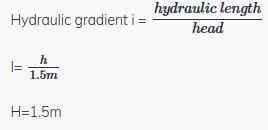Test: Soil Mechanics - 2 - Civil Engineering (CE) MCQ
25 Questions MCQ Test Civil Engineering SSC JE (Technical) - Test: Soil Mechanics - 2
Which of the following is a measure of particle size range?
According to Atterberg, the soil is said to be of medium plasticity if the plasticity index PI is
If the natural water content of soil mass lies between its liquid limit and plastic limit, the soil mass is said to be in
When the plastic limit of a soil is greater than the liquid limit, then the plasticity index is reported as
If the plasticity index of a soil mass is zero, the soil is
The admixture of coarser particles like sand or silt to clay causes
The water content of soil, which represents the boundary between plastic state and liquid state,is known as
According to IS classification, the range of silt size particles is
Highway Research Board (HRB) classification of soils is based on
Dispersed type of soil structure is an arrangement comprising particles having
The degree of saturation in soils can be defined as the ratio of
The total and effective stresses at a depth of 5 m below the top level of water in a swimming pool are respectively
The critical hydraulic gradient ic of a soil mass of specific gravity G and voids ratio e is given by
The hydraulic head that would produce a quick condition in a sand stratum of thickness 1.5 m,specific gravity 2.67 and voids ratio 0.67 is equal to
Physical properties of a permeant which influence permeability are
|
2 videos|122 docs|55 tests
|






















